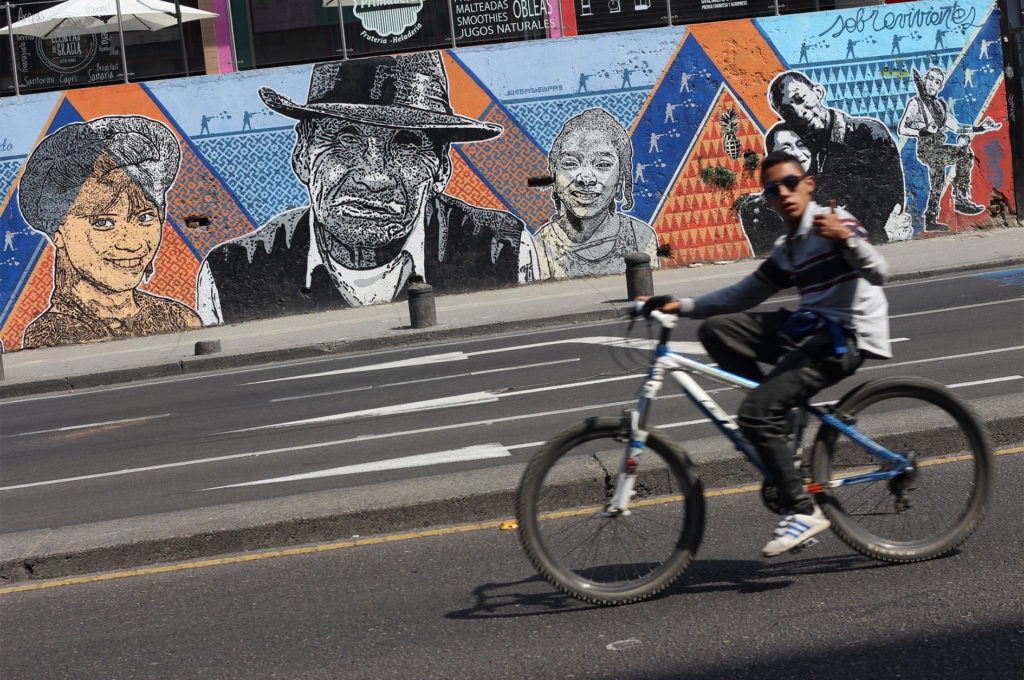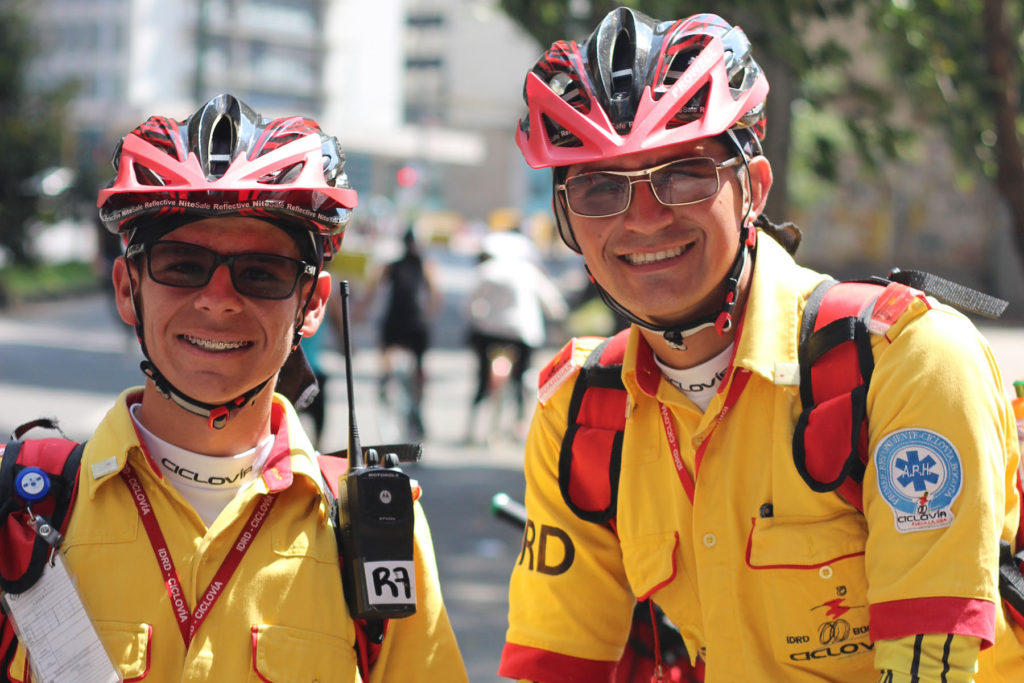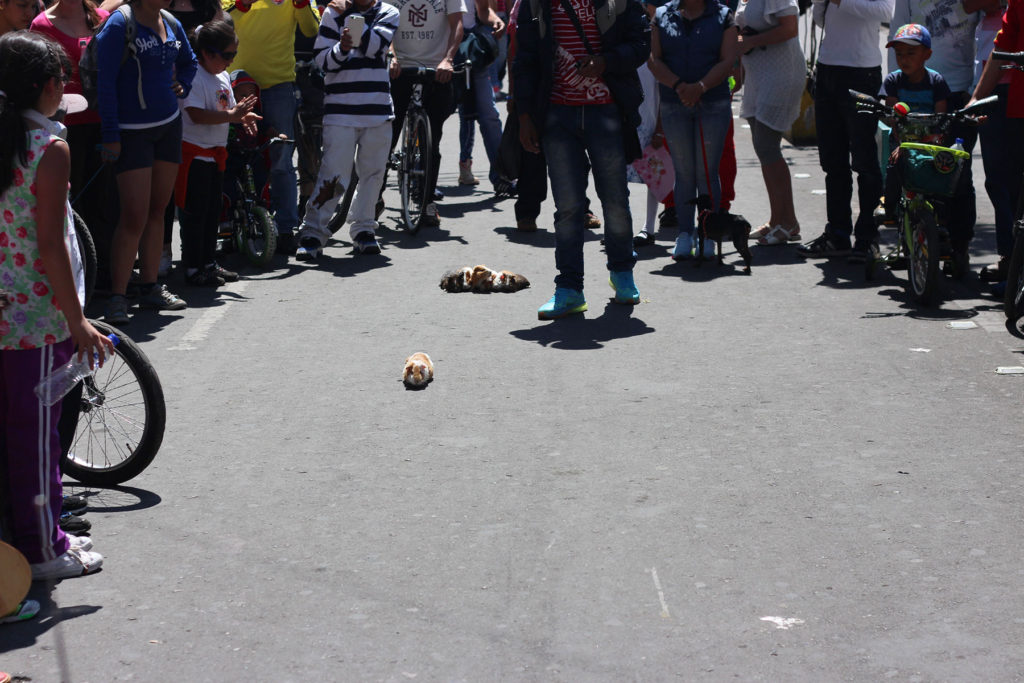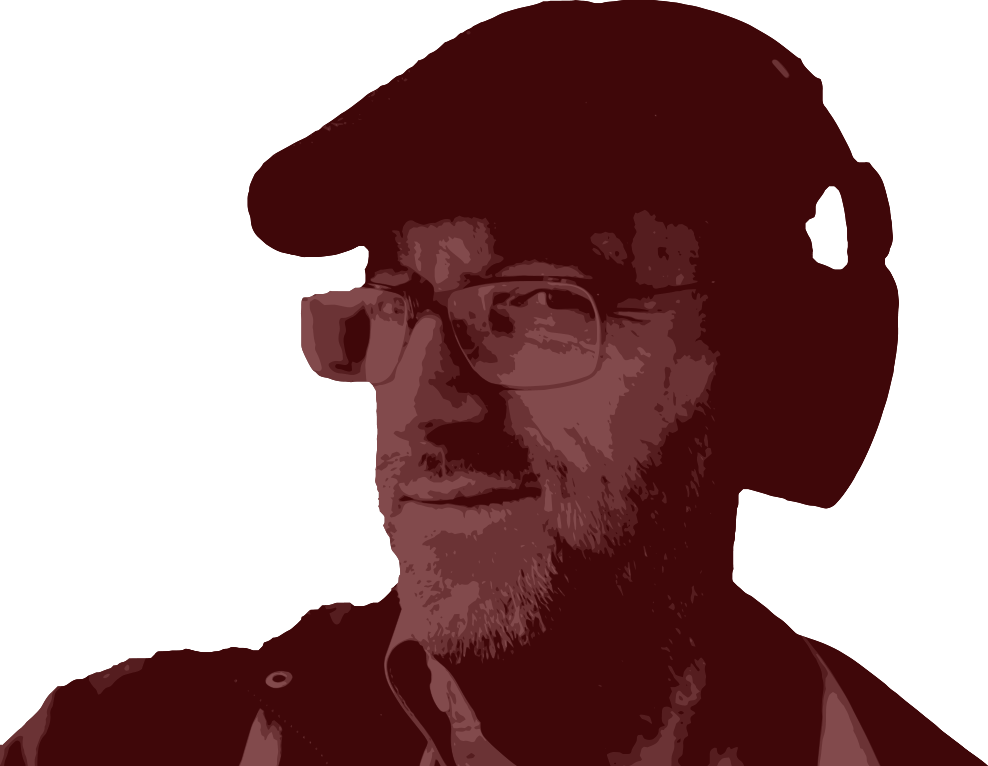Take out cars, replace with guinea pigs
"People haven’t traditionally gone on cycling holidays to Latin America. The ancient Lonely Planet South America On A Shoestring I borrowed from the library pretty much warns against it, citing aggressive drivers and dangerous roads.
Watch out for the Argentines and Brazilians especially, the book says, they are a ‘serious hazard’ on the road.

[...] "People haven’t traditionally gone on cycling holidays to Latin America. The ancient Lonely Planet South America On A Shoestring I borrowed from the library pretty much warns against it, citing aggressive drivers and dangerous roads.
Watch out for the Argentines and Brazilians especially, the book says, they are a ‘serious hazard’ on the road. If you must cycle in South America, definitely bring your own bike, it warns, because locally manufactured machines are ‘less sturdy and dependable’. But the message is clear. When it comes to bicycles, the continent is backward.
[please note: this is an edited extract from the Bicycle Clip Diaries, free to bike shop staff, NHS, and people suffering financially during the current pandemic. Please DM for details, ]
I’m happy to say that things have changed since then, and these days Colombia is well known for its road racing professionals, like Nairo Quintana who came second twice in the Tour de France. In 2014, he claimed the pink winning jersey of the Giro d'Italia, with fellow Colombian Rigoberto Urán coming in second. The president was amongst many Colombians who wore a pink shirt in Quintana’s honour. And when Egan Bernal finally won in France, in 2019, the victory was beamed onto giant TV screens in his hometown plaza mayor to tearful fans.
Colombians will proudly and accurately explain that their mountain biking is spectacular, and, even in the relatively niche world of urban downhill mountain biking, Colombia is famous. Almost three million people have seen the helmetcam footage of local rider Marcelo Gutiérrez going dangerously fast down improbably steep streets, and jumping down stairs as chickens scatter. A good proportion have felt queasy whilst doing so. But for me it’s all about Ciclovía.
Bogotá is where the Ciclovía phenomenon started, I tell people. ‘Ciclovía’ literally means ‘cycle path.’ But it’s also the name for an event when they ban cars so that people can cycle (or walk or rollerblade) on car-free streets. And it’s Sunday’s Ciclovía that I really want to see.’
I was surprised to find that even the airport taxi driver seemed to share my enthusiasm for cycling; I have never met a taxi driver who is enthusiastic about bicycles before, and in tabloid fashion I try to coax him into saying something bad about cyclists, but he offered nothing. Instead he told me that three times a year they have car free days. From him I also learnt that 40 per cent of traffic is banned during rush hour using a number plate allocation system. His wife works for the city and has a hand in organising it all.
I already knew that Enrique Peñalosa, who was mayor of Bogotá between 1998 until 2001, and re-elected in 2015, is credited with making these policies happen. For a while he was the closest thing urban transport policy had to a poster boy. In a TED talk which has been viewed more than a million times, he said: ‘An advanced city is not one where even the poor use cars, but rather one where even the rich use public transport.’

[…] Ciclovía was started by bicycle activist Jaime Ortiz Mariño, who studied architecture and design in the USA in the late 1960s. During this time, he came to believe that cars made cities unpleasant places to live. He saw cars and suburbs as representing urban crisis ‘whereas the bicycle symbolises ‘individuality, civil rights, women's rights, urban mobility, simplicity, the new urbanism, and environmental consciousness.’
He was influenced by US protest movements, and the largely forgotten American bicycle boom of the early 1970s. This was a time when people burned driving licences as well as draft cards, and held pedal-ins as well as love-ins. Even President Nixon’s secretary of transportation rode a fold-up, and talked about ‘equal rights for bicycles’. And American activists demanded cycle lanes, some of were actually built.
Ortiz Mariño set up Ciclovía in Bogotá in 1974. Given the proportion of people who wore huge flappy flared trousers during that era, presumably bicycle clips would have been worn as a standard health and safety measure. From an estimated 5,000 initial Colombian cyclists, Ciclovía became a worldwide movement with similar events taking place from Belfast to Bangalore, via Mexico City, Melbourne, Canada and Capetown.
I arrive on my blue Alubike, in time for the 7am start, ready to reclaim the streets. I’m stupidly excited about Ciclovía, having travelled several thousand miles to be here. It turns out, that this is embarrassingly early, and I feel like I’ve turned up to a gig at the wrong time, although there are stall holders setting up their wares. It seems that you will soon be able to buy home-made jewellery, fruit, snacks and inner tubes. There are serious corporate promotional tents for mobile phone companies and big PA speakers, as well as sole traders.

It’s strange and liberating to have the roads officially to yourself on a bicycle, and watching people arrive is joyful, as walkers, rollerbladers, toddlers, kids on scooters, and jugglers all make use of the sudden additional space. There are 80 miles or so of closed-down roads on the route, including a couple of major thoroughfares across the city which are more than 10 miles long.
Effectively, whole swathes of the city become an urban park. It feels much more democratic than, say, a triathlon route or a sponsored half marathon through your city because anybody can get involved, not just the healthy and the pumped up. The atmosphere is incredibly relaxed. I’ve been on a few Critical Mass rides in London, held on the last Friday of every month. These are unofficial and more spontaneous rides with no planned route. There’s music and there can be a carnival atmosphere which is fun to be part of. A few drivers smile and honk support. But it can easily turn confrontational as feisty cyclists shout at the equally feisty motorists over who truly has right of way, neither group really caring for what the other has to say. In some cities around the world, there’s even a polite offshoot, called Critical Manners. But here the roads are traffic free, so there is little conflict.
There’s dawdling and busking, particularly in the centre of town, where it’s impossible to pick up any speed on a bicycle. Ironically many of the cycle lanes are blocked by ciclovía-related activity, although it’s hard to get too stressed about it when a guinea pig race and a pair of Michael Jackson impersonators are the hazards in your way. 1980s style aerobercise and rhumba classes line the route. These look pleasingly amateurish, with a focus on laughter over intensity. The age seems to range from three to eighty-three.
The Journal of Urban Health has estimated that the event costs less than 10 cents per person to put on, but brings in several dollars’ worth of health benefits. Partly this is because two million people get involved in ciclovía. In a city where plenty of people live in small apartments and breathe in polluted air throughout the week, it is a populist and popular event. Some of these are ‘bikewatch’ volunteers in yellow neo Baywatch outfits which help bring policing costs down. Sponsorship partly funds the event, along with a tax on phone bills.
‘En Bogotá los ciclistas son héroes cívicos’, says a sign along the route: in Bogotá the cyclists are the civic heroes.
Colombia’s car ownership levels are still much lower than those in Europe, so urban cycling is not necessarily about a younger generation rejecting their parents’ car ownership, or people taking up cycling as a serious hobby. There seems to be less in the way of cycling tribes, and lots of older riders and families on rusty old bicycles. They look like people who use their bikes a lot, without dressing up for it. It seems to me that these are exactly the kind of people you should close the roads for, in order to make it easy to exercise. Controlling the public health disaster of mass obesity can be fun, it turns out.
Further from the centre of town there’s more space between riders. Bikes start to get a bit more serious and sportier, and there are more ‘proper’ cyclists, for whom Ciclovía means a serious run out. They head uphill along main road towards Chuachi. The road isn’t closed off, but early in the morning there’s not much traffic and roadies take over the road. The climb is only around 7 kilometres, and but it’s steep and for me, pretty slow going. I’m overtaken by the joggers, and not particularly good joggers, at that. I’m blaming altitude sickness.
Even here, the event isn’t competitive, and it’s not just sport cyclists. There are people on clapped out old bicycles, and handful of singlespeeders going slowly or pushing their bikes. There are plenty of words of encouragement from the more serious riders on low gear mountain bikes burning up the hill.
It starts to warm up and halfway up the hill I stop and buy juice and fruit from a little stall run by an old woman and her grandson. She smiles and offers encouragement to her customers. People stop and chat in clusters, sharing in the heat and the incline. Coming the other way, a kid on a BMX whizzes down the hill with his mate precariously balanced on the handlebars. I don’t want to watch but can’t turn away. They must be going well over thirty miles per hour.
I push on, and at the top of the hill there are more stalls selling brightly coloured replica cycle clothing and rows of road bicycles. I spot a couple of nice vintage Pinarellos amongst them. Cyclists of all denominations are relaxing, laughing, eating street food and taking the shade. It’s been a serious hill, but the clear views of the city and the spectacular descent make it worthwhile. For a while, it’s close to perfect.
The regular conflict between motorists and cyclists becomes evident on one or two sections of the road which are still open to traffic, although cyclists don’t get angry when people honk their horns. Instead. they just wave and smile.
Arriving back in the centre of town, it gets busier but stays relaxed as the day goes on. I keep seeing the friends I made on the climb, familiar faces now, and we stop and chat, including some people from a club. If you’re really interested in bikes, you should go to San Gil, they say, with a distant look in their eyes."
(spoiler alert. I did go to San Gil. It was excellent. But not as much fun as the customised Rasta BMXs of the Caribbean Coast. More in the book, Kindle version available here.)
